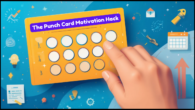
10 Science-Backed Strategies to Overcome Procrastination in 2025
If you’re looking for ways to overcome procrastination, you’re not alone. In 2025, due to constant digital distractions and the challenges of working remotely, procrastination has become one of the biggest productivity-reducing problems for both students and professionals.
In fact, studies show that about 85% of students and 70% of working professionals in the US struggle with chronic procrastination.
But here’s the good news: procrastination isn’t a character flaw—it’s a habit that can be changed.
In this post, you’ll discover 10 science-backed strategies to tackle procrastination, take control of your time, and achieve your goals with more consistency.
Why Understanding Procrastination Helps You Overcome Procrastination
Understanding why we procrastinate is the first step to overcoming it.
Basically, procrastination is a battle between your limbic system (the emotional center of the brain that seeks immediate pleasure) and your prefrontal cortex (the rational part that plans for the future). The result? A tendency to prioritize immediate gratification (like watching YouTube) over long-term rewards (like completing a project).
Other major causes include:
- Fear of failure
- Perfectionism
- Overload
- Stress and burnout
Now that you know the “why,” let’s take a look at 10 proven ways to beat procrastination.
1. Break Big Tasks into Micro-Tasks
Psychologists have found that big tasks overwhelm us, causing us to put off work and delay getting started. What’s the solution? Break them down into chunks.
👉 Example: Instead of “Write a blog post,” break it down like this:
- Create an outline
- Write the introduction
- Draft the first two sections
- Edit and format
This builds momentum — a phenomenon known as the Zeigarnik effect — where completing small steps moves you forward.
2. Use the 5-Minute Rule
When you get stuck, tell yourself:
“I’ll only do this for 5 minutes.”
This technique, based on cognitive behavioral therapy (CBT), reduces mental resistance. Often, once you get started, you’ll naturally continue for longer than 5 minutes.
3. Apply the Pomodoro Technique
The Pomodoro Technique, developed by Francesco Cirillo, involves doing the following:
- A 25-minute focus sprint followed by
- A 5-minute break
This method reduces fatigue and maintains focus. Tools like Focus To-Do or Pomofocus.io can help.
4. Make the Task Emotionally Rewarding
Our brains love dopamine, the “reward chemical.”
By adding a small reward when a task is completed — such as enjoying a cup of coffee after finishing a report — you create a positive feedback loop that makes productivity addictive.
5. Change Your Environment
Environmental psychology shows that our surroundings directly influence behavior.
Tips:
- Create a distraction-free space
- Block distracting apps (use tools like Freedom or Cold Turkey)
- Play brown noise or lofi beats to increase focus
6. Practice Self-Compassion
Harsh self-talk (e.g., “I’m lazy”) increases procrastination and anxiety. Research shows that self-compassion reduces procrastination and improves performance.
Be kind to yourself:
- Replace “I failed again” with “It’s okay to struggle — I’ll try again tomorrow.”
7. Use Implementation Intentions
The simple act of setting “if-then” plans dramatically boosts follow-through.
Example:
“If it’s 7 AM, then I’ll write for 25 minutes.”
This technique makes actions automatic and minimizes the need for willpower.
8. Apply Temporal Landmarks (Fresh Start Effect)
Humans are psychologically wired to embrace new beginnings.
Use Mondays, the first of the month, or birthdays to mentally reset so you can begin projects with fresh inspiration.
9. Visualize Future Regret
Studies show that imagining future regrets can boost action.
Ask yourself:
“How will I feel next week if I don’t start this task today?”
This prompts your brain to consider long-term consequences, which leads to immediate action.
10. Limit Choices and Reduce Decision Fatigue
Too many choices is paralyzing.
To combat this:
- Limit your to-do list to 3 main tasks per day.
- Create routines (like picking out work clothes or meals in advance) to reduce daily decision-making.
This frees up mental energy for important tasks.
Bonus Tip: Use Accountability Systems
Accountability increases the likelihood of action by 65%.
Ways to implement this:
- Partner up with a friend or colleague
- Join an accountability group
- Use an app like StickK or Beeminder to place bets
You Can Overcome Procrastination Starting Today
Procrastination isn’t a personal flaw—it’s a habit you can change.
By implementing these 10 science-backed strategies, you’ll gradually:
- Get focused
- Reduce overload
- Take consistent action
Remember: it’s about progress, not perfection. Start with just one or two strategies and build from there.
👉 Which strategy will you try first?
👉 Share your thoughts in the comments below or send this post to a friend who is struggling with procrastination!
Resources & Further Reading
- The Now Habit by Neil Fiore
- Atomic Habits by James Clear
- The Procrastination Equation by Piers Steel
You may like this: 7 Strategies To Curb Your Procrastination In 2025






Great website! I am loving it!! Will be back later to read some more. I am taking your feeds also
Generally I do not read post on blogs, but I wish to say that this write-up very forced me to try and do it! Your writing style has been amazed me. Thanks, quite nice post.
I’m impressed, I have to say. Really hardly ever do I encounter a blog that’s both educative and entertaining, and let me inform you, you have hit the nail on the head. Your concept is excellent; the difficulty is something that not enough persons are speaking intelligently about. I’m very completely happy that I stumbled across this in my seek for something relating to this.
I am usually to running a blog and i actually recognize your content. The article has really peaks my interest. I’m going to bookmark your site and hold checking for brand spanking new information.